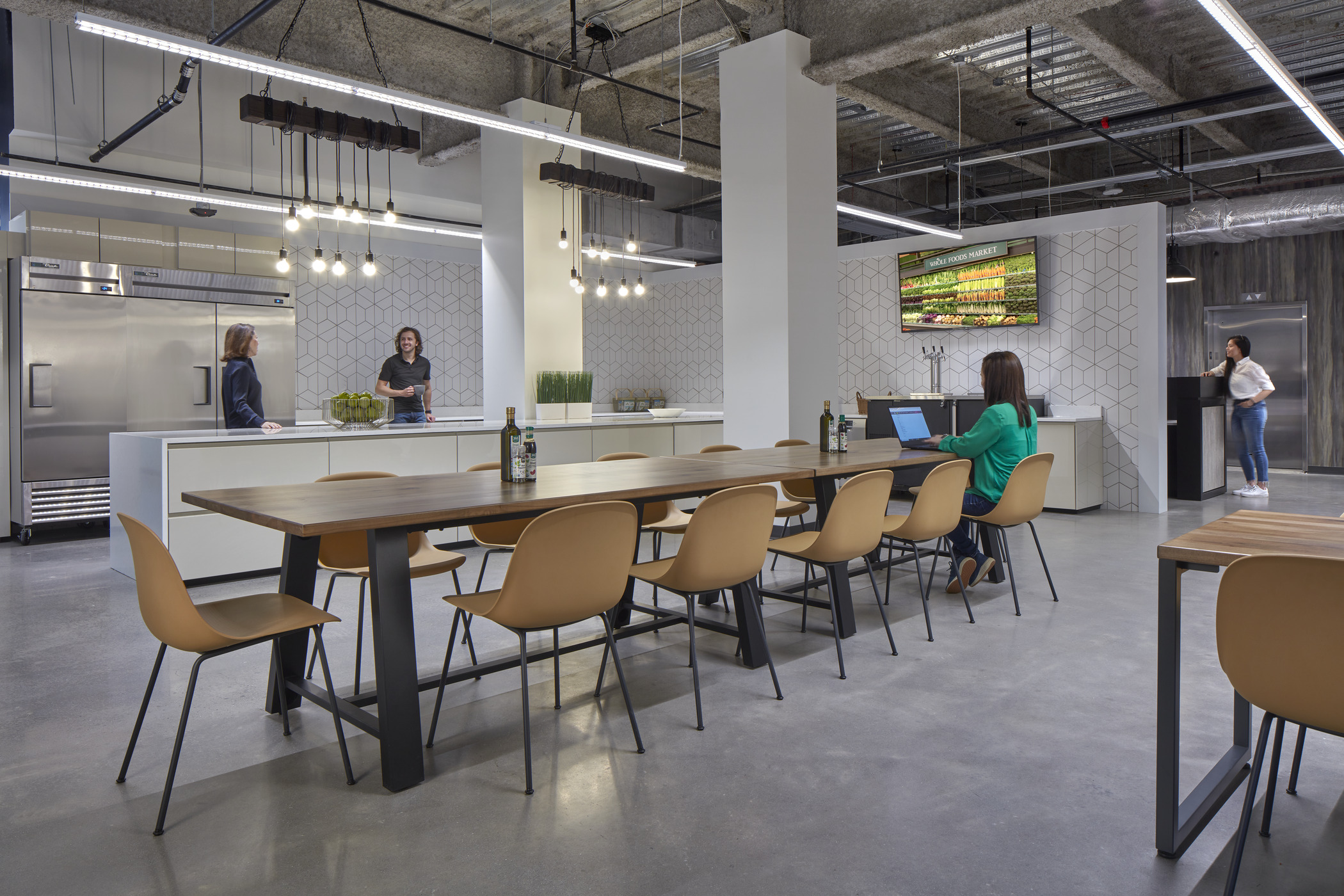When I started my first job as a designer at HKS in 1983, there were no computers. We drew in pencil or ink on mylar, cut architectural models out of hotwire and foam, and all renderings were, of course, also done by hand.

We worked long hours, but the world moved slower due to a lack of constant communication. We traveled often; large projects in various cities outside of Dallas meant the design team would travel to our clients and end-users for the week and bring the changes back.
Slowly, software replaced ink and mylar, (some) travel was replaced with conference calls, and we became more efficient than ever before. We knew this new technology was transformative, but we could never have predicted how reliant our world we become on the ability to work together instantly, seamlessly, regardless of our physical location. Similarly, as we reflect on our pre-COVID-19 world, none of us could’ve foreseen how the pandemic would shift our focus from when and where we work to how we work.
Last summer, after several months of lockdown, commercial real estate was in a state of turmoil—our firm’s commercial practice included. If people can work efficiently from home, what would become of our industry?
But after a year of exclusively remote work rampant with employee mental health issues like burnout and loneliness, we’ve discovered there’s no replacement for the benefits of in-person collaboration. And offices are primary locations for many people to make those connections.
That doesn’t mean we should be rushing back to the 8-5, though. With the job market more competitive than ever, employees expecting a more fulfilling work/life balance, and more companies like HKS embracing hybrid work strategies, commercial owners should rethink their opportunity space to stay relevant, as well. Here are four ways businesses can evolve to thrive in the market of flexible or hybrid work:
Double down on collaboration spaces
Companies have long highlighted the benefits of “open seating,” but now is the time to re-evaluate how much of that space is needed for individual employees or if it can be transformed into something more valuable for collaboration.
Companies can encourage employees with focused work, like accounting or reporting, to work from home during focus hours and transform individual workspaces into space that cultivates various collaboration styles, teamwork, and brainstorming opportunities. Team members will then rely on the office for inspiration through interaction, learning, and engagement, so group spaces should be conducive to these abstract processes.
Reimagine the purpose of the office
When in the office full-time, employees relied on the power of “casual collisions” to reinforce the expected presence, but with people in and out of the office on varying schedules, we need to shift to focus on intentional presence. In other words, employees go into the office for a specific purpose. They want to return periodically because they get something they can’t get anywhere else: inspiration, collaboration, and connection.
Think about the office as a place that is conducive to creativity; this may mean shifting your expectations about what an office looks and sounds like. Collaboration comes with an amount of ambience and liveliness that was not often seen in traditional office settings before the pandemic. We need to explore and shift the reasons we go into the office in the first place, rather than expecting the same pre-pandemic office environment.
Build in the technological resources teams need to thrive.
We’ve become increasingly reliant on technology over the past year. When working in person, teams will need to have resources readily available to them to be most productive when transitioning between home and office. Many of the tools and software that kept us connected throughout the pandemic, whether for meetings, task management, collaborative design, or shared document development, will still need to be readily accessed by in-person teams.
Further, spaces will need to accommodate those who are physically present as well as those interacting virtually. Acoustics for these team spaces should also be addressed, including noise control in the ceilings to ensure those connecting virtually can seamlessly be included in the conversation.
Prioritize and keep tenant health at the front of the mind.
Healthy buildings are critical for tenants to feel safe in their environments. The WELL Health & Safety rating for buildings is no longer a nice-to-have, but something building owners and occupiers expect. Owners should aim to provide transparency around the overall building environment, so employees feel fully confident when returning to the office.
Solutions might include putting displays at elevator lobbies that graphically indicate key environmental issues about how well the building is performing, including carbon dioxide levels, lighting power usage, and occupant density. In addition to visibly sharing health and safety interventions, consider updating heavily used areas like restrooms and elevators with touchless options for additional precautions.
As a firm, we’ve bought into these strategies and advise our clients to do the same. As with any major change, though, we stumble and learn as we go. If the pandemic taught us anything, sometimes it takes a dramatic push to lead to innovation and ultimately make us stronger. Our industry is resilient, and I look forward to seeing the progress made as we evolve together.
Dan Noble is president, chairman, and CEO of HKS Architects.





